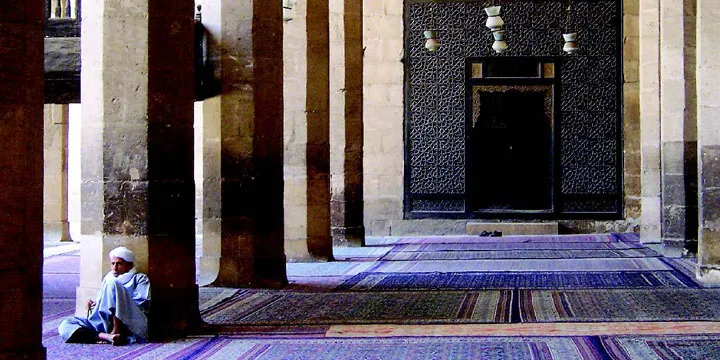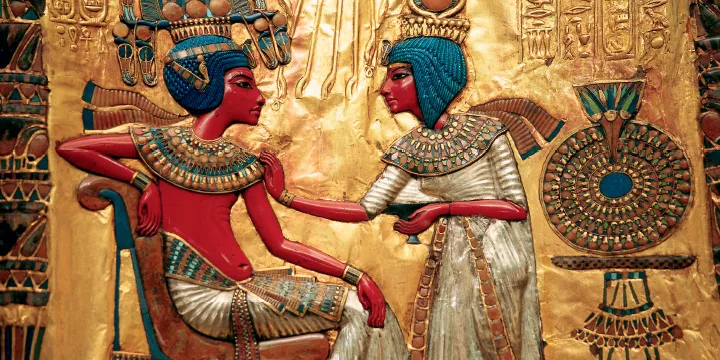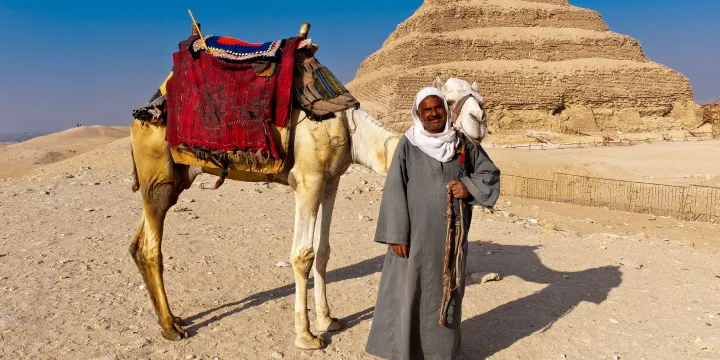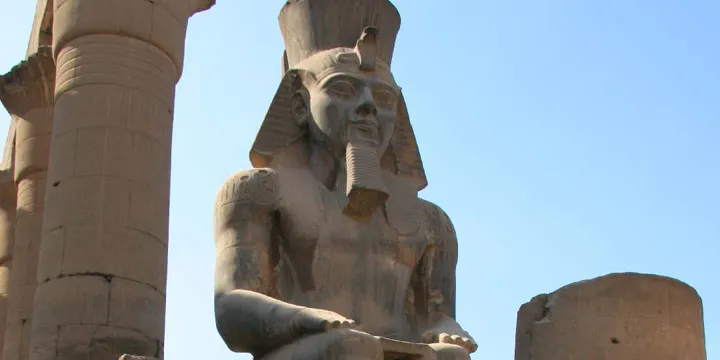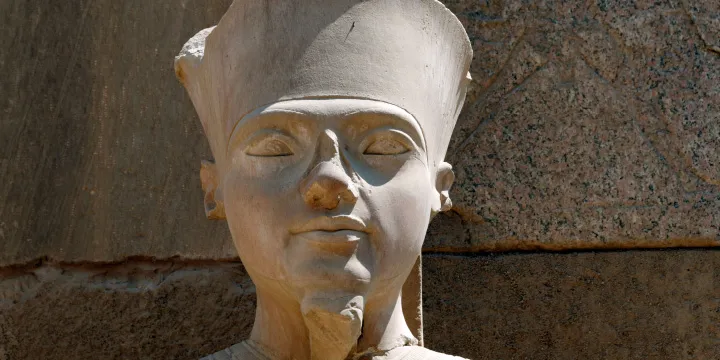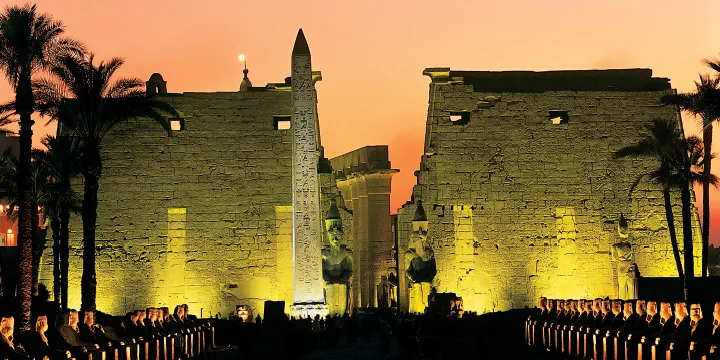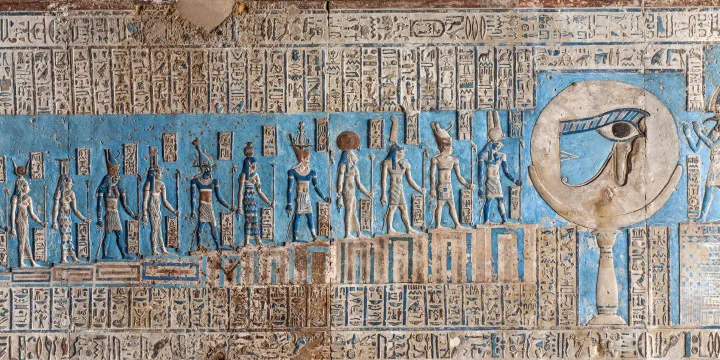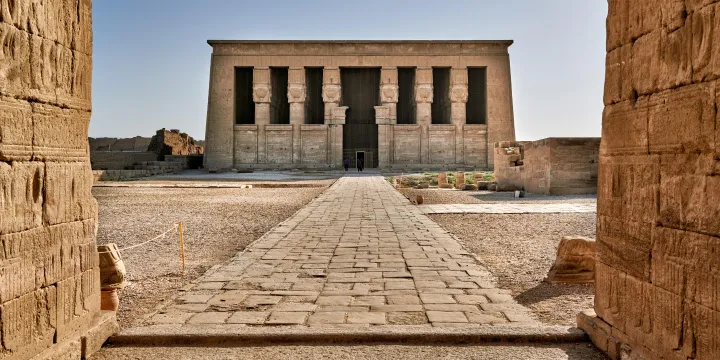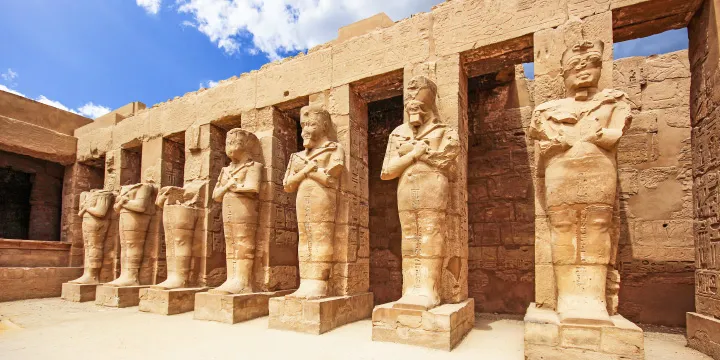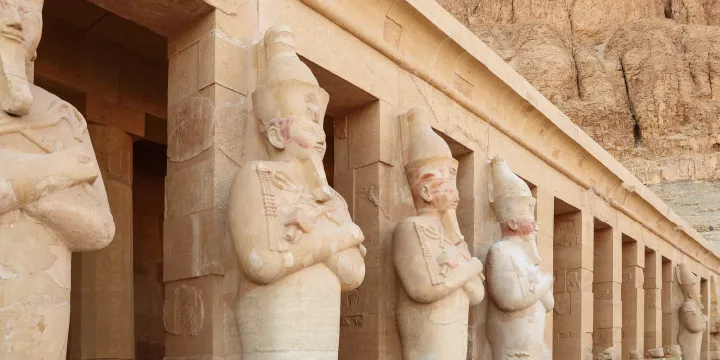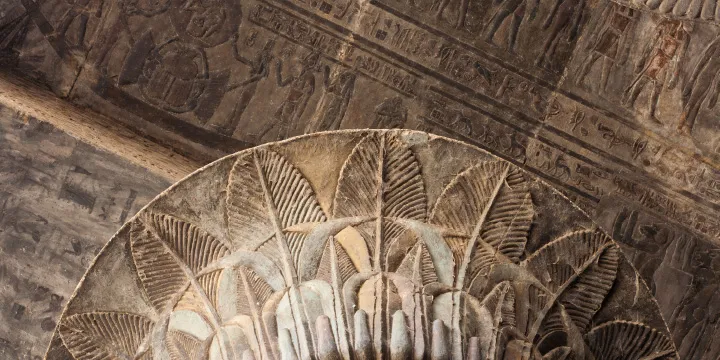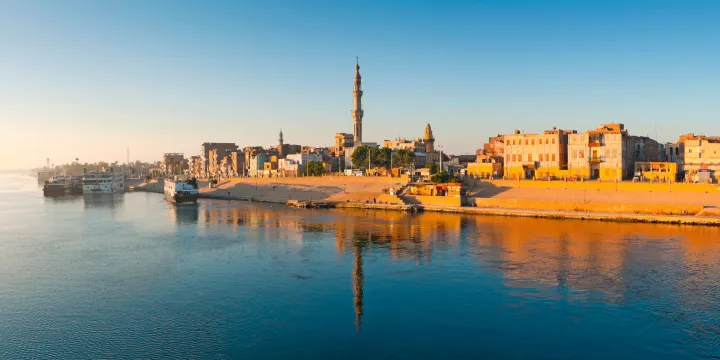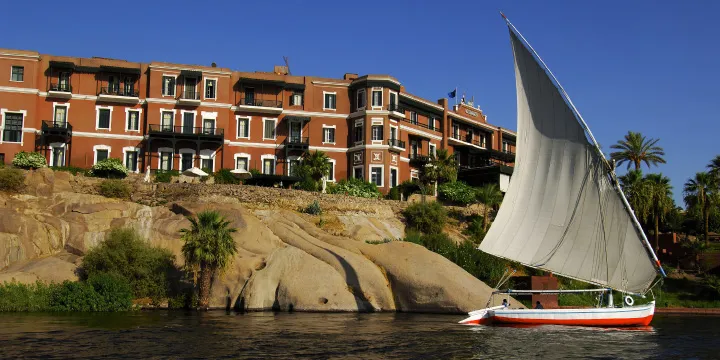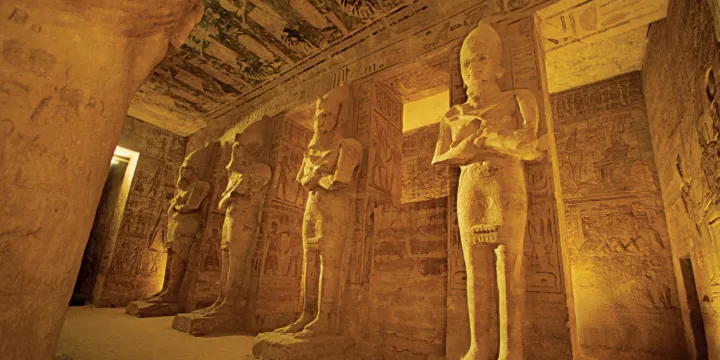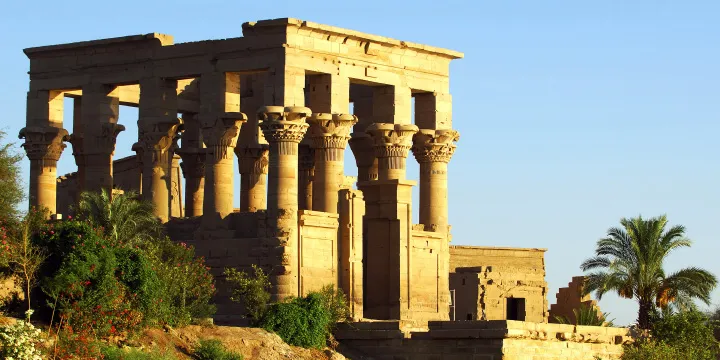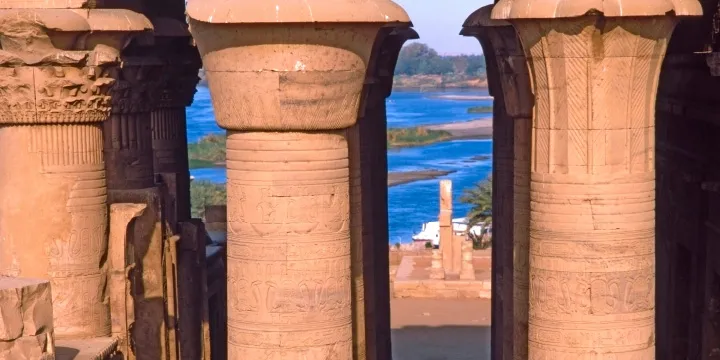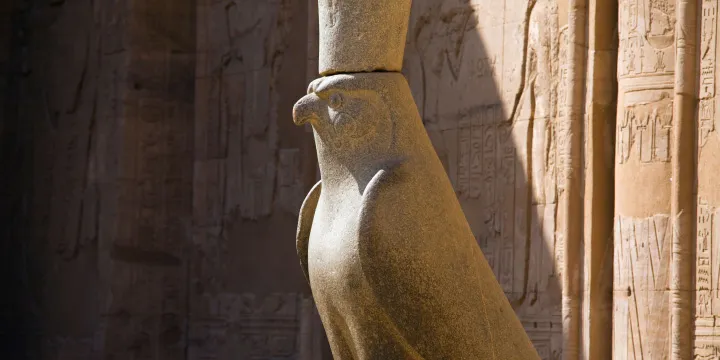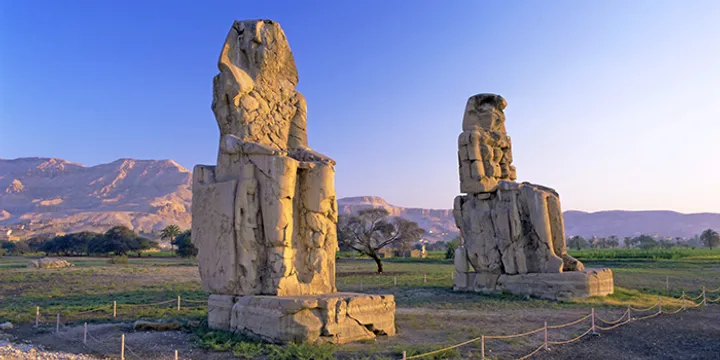Cairo and Nile Cruise
DAY 1 – Cairo, Egypt
It has been said of Egypt’s exhilarating capital, “He who has not seen Cairo has not seen the world.” Certainly, the heart of the nation beats with an unbridled passion in this city made prosperous over millennia as a stopover for Sahara caravans on trade routes to Byzantium. Amid the stimulating strum, the insistent beauty of everyday life reigns here, with the serene Nile sliding through like an entrancing serpent. Cairo’s very age mesmerizes; its monuments have stood here for more than 5,000 years.
DAY 2 – Cairo, Egypt
For centuries, Cairo has played a central role in religious and cultural developments in Egypt. Today, the city is home to the only Wonder of the Ancient World still intact—the Great Pyramids of Giza. The city’s historic district, Old Cairo, boasts the world’s highest concentration of Islamic architecture. In addition to these monuments, Cairo has been making efforts as a member of the UNESCO Creative City of Crafts and Folk Art to preserve its traditional craftwork heritage including glassblowing, coppersmithing, pottery, ceramics and jewelry.
CAIRO CITADEL & EGYPTIAN MUSEUM – AN IMPOSING FORTRESS AND ANCIENT TREASURES
Enjoy a fascinating overview of Egypt’s capital city and vast history. Drive to the Citadel of Salah el Din (Citadel of the Mountain), perched on a rocky hill. Its great dome and towering minarets dominate the Cairo skyline. Home to 60 mosques spanning the centuries, its most notable is the Mosque of Muhammad Ali, sometimes called the Alabaster Mosque for its gleaming interiors. Later, take a short drive with your guide to the remarkable Museum of Egyptian Antiquities. Built in 1897 and opened in 1902, the museum’s 107 exhibit halls hold over 120,000 items dating from the prehistoric to Greco-Roman periods. Its most celebrated collection, in the Tutankhamen Gallery, contains the famous gold mask and other artifacts.
DAY 3 – Cairo, Egypt
A captivating world that has withstood the tests of time unfolds beyond the medieval walls enclosing Old Cairo. Muizz Street, named for the Fatimid caliph who established Cairo as Egypt’s capital in 969, was the city’s main thoroughfare, running between the 11th-century city gates Bab al-Futuh and Bab Zuweila. Its splendid Islamic architecture—from elegant mosques and mausoleums to ornate palaces and former residences of Egyptian dignitaries and prominent merchants—provides a glimpse into the glory of the Fatimid dynasty and the periods that followed.
SAKKARA STEP PYRAMID, GIZA, THE SPHINX – VIEW ICONIC LANDMARKS OF ANTIQUITY
Immerse yourself in the past with a visit to three of the most iconic landmarks of ancient Egypt. Journey with your guide to the necropolis of Sakkara, believed to be the first pyramid built in ancient Egypt. Enter the complex via a narrow portal, part of a great wall that once surrounded the necropolis. Admire the enduring construction of the Step Pyramid, then step inside one of the tombs, some of which are decorated with the finest paintings from the Old Kingdom period. After lunch, you will travel to the Giza Plateau. There are many tombs here, but the most spectacular are the Great Pyramids of Khufu, Khafre and Menkaure, the last of the Seven Wonders of the Ancient World remaining. Hear about their fascinating history from your guide. Then, proceed to view the famous Abu al-Hol, the Sphinx, erected here to guard the tombs and ward off tomb raiders and enemies of the pharaohs.
DAY 4 – Luxor, Egypt
After breakfast, check out of your hotel and fly to your embarkation city. Luxor is set on the east bank of the Nile River and once served as the capital of Egypt’s New Kingdom. Today, it is a UNESCO World Heritage Site lined with beautiful colonial hotels and some of the world’s most ancient and significant ruins. Many consider this city, watched over by graceful single-sailed feluccas plying the Nile, one of the world’s great open air museums. The sprawling Temples of Luxor and Karnak on the east bank are linked by the ancient Avenue of the Sphinxes. On the west bank, in the Valley of the Kings, lie the tombs of Egypt’s great pharaohs.
KARNAK TEMPLE, LUXOR LIBRARY – LUXOR MONUMENT AND HISTORIC EXHIBITS
Visit the Temple of Karnak, among the world’s largest ancient temple complexes. Marvel at its great Hypostyle Hall, a forest of ancient columns that once supported a towering ceiling, and its huge sacred lake. Learn more about this massive complex, embellished over centuries by every major pharaoh. After time here, continue to the Luxor Heritage Center, and explore the center’s interactive showcase documenting the country’s history from ancient times to the present. Tour the Forsan al-Sama’a Hall, with its exhibits featuring astrological equipment, and the 3D Show Hall, home to selected archaeological pieces from the Pharaonic, Coptic and Islamic eras. Afterward, visit the library, which houses more than 10,000 books on Egyptian history in several languages and features a dedicated map room.
LUXOR TEMPLE – VISIT A SPECTACULAR ANCIENT EGYPTIAN SITE
Visit one of the most breathtaking temples in Luxor, spiritual capital of Egypt for 15 centuries. Begin with your guide at the Temple of Luxor. This magnificent Ancient Egyptian temple complex was built in approximately 1400 BC by Amenhotep III and Ramses II. Enter through its massive pylons; as you explore, your guide will interpret the ancient hieroglyphs, some of which illustrate the extravagant Opet festival held to ensure a good harvest. One of the obelisks and several of the temple’s statues now reside in Paris. You will also see remains of the Avenue of the Sphinxes, which links Luxor to Karnak. Beyond lies the Great Court of Ramses II, whose walls are adorned with the names and titles of his 17 sons. In 1989, during a period of restoration, a cache of 26 statues was found here, buried by priests in Roman times.
DAY 5 – Qena, Egypt
Known in ancient Egypt as Caene, Qena’s situation on the banks of the Nile River has bolstered its prosperity over millennia. Merchants and travelers have long journeyed here from the Red Sea, through the valley, bringing goods from Persia and beyond. The Sheikh el-Qenawi Mosque on the main square serves as a monument to the city’s rich and all-embracing Islamic and Sufi past. Qena is mostly known as the gateway to the magnificent ruins of the Dendera Temple. Its stone gate and towering columns adorned with hieroglyphics are some of Egypt’s best-preserved structures.
DENDERA TEMPLE EXPLORATION – VIEW ANCIENT ART AND ARCHITECTURE
Return to the time of the pharaohs with a tour of Dendera Temple, one of Egypt’s best -preserved temple complexes. Located on the west bank of the Nile River on the edge of the desert, this massive complex dates back to the mid-4th century BC, though archaeologists believe a temple has existed on the site since 2250 BC. Visit the main temple, Hathor, and admire the many examples of Ptolemaic Egyptian art adorning its chambers. View the Dendera Zodiac, a unique bas-relief sculpture from the Greco-Roman period that maps the ancient sky. The original was taken by the French in 1820 and now sits in the Louvre; what remains is a replica. Also, examine the controversial Dendera Light, three stone reliefs depicting what some say was ancient Egyptian electrical lighting technology (others contest it represents Egyptian mythology). Explore the subterranean necropolis and crypts before returning to your ship.
DAY 6 – Luxor, Egypt
Luxor lies amid what is arguably one of the world’s largest archaeological sites: Thebes, once a thriving imperial capital. In antiquity, the Nile River ran through Thebes, dividing it into a “City of the Living” and a “City of the Dead.” The former referred to the east bank (modern-day Luxor) as this was where the majority of the city’s population—and at times, Egypt’s rulers—made their home. The west bank (known today as Kurna) was designated the latter as it served as a necropolis, dotted with the lavish resting places of royalty and other nobility.
VALLEY OF THE KINGS, HATSHEPSUT, QUEEN NEFERTARI TOMB – BURIAL PLACES OF EGYPTIAN ROYALTY
Witness the pharaohs’ portals to the afterlife on a fascinating excursion. The stark hills of the Nile’s west bank in Luxor once hid countless treasures. Here, pharaohs were buried in elaborate tunnels carved into the earth and adorned with artful paintings. Their mummies were draped in gold and jewels and their tombs were filled with worldly possessions. Howard Carter discovered Tutankhamen’s tomb here in 1922, bringing the world’s attention to this necropolis of kings and queens. Journey here with your guide before the heat of day and enjoy access to select tombs. After time to explore on your own (guide-led tours are not allowed in the tombs), continue to the terraced Mortuary Temple of Hatshepsut, a female pharaoh, dramatically carved into the Theban Hills. Finally, visit the Valley of Queens and enjoy private access to Queen Nefertari’s tomb.
DAY 7 – Esna, Egypt
Ancient Egyptians knew Esna as Latopolis, named for the largest of the perch species that swam in the Nile’s sacred waters. Its ancient past lives on in the colorful street market overflowing with fabrics, carpets, brassware, mother-of-pearl keepsakes and more. Esna’s glorious Temple of Khnum is celebrated for its 1st-century Roman Hypostyle Hall, 24 columns topped with intricately carved floral capitals. Its walls are adorned with images of Roman emperors making offerings to Egyptian gods.
ANCIENT TEMPLE OF ESNA – DISCOVER GRECO-ROMAN DEDICATION TO EGYPT AND ITS GODS
Visit Esna, once the ancient site of Latopolis, and explore its temple, primarily dedicated to the god Khnum. A water god, Khnum was worshipped as the guardian of the source of the Nile and was said to have fashioned humankind from his potter’s wheel. The temple was thought to have been one of the latest temples built by the ancient Egyptians. See the well-preserved Hypostyle Hall, whose back wall is said to have been the facade of the old Ptolemaic temple. Admire the intricate carvings adorning towering columns and marvel at ancient wall paintings that still retain their original color. Witness the last known hieroglyphic inscriptions ever recorded, by the Roman Emperor Dios in 250 AD.
VILLAGE OF ESNA BY FOOT – HISTORIC TEMPLE AND LIVELY MARKET
Explore Esna, once an important center for trade and later a regional capital under the Greeks and Romans. Today, Esna is a quiet farming town with a lively market scene. Take a short walk from your pier into town. Along the waterfront, there are several examples of 19th-century houses with elaborate mashrabiya, or elaborate wooden lattice screens. Walk past the 14th-century Emari minaret, one of Egypt’s oldest, and view the remains of the ancient temple dedicated to the god Khnum. Built in Greco-Roman times by the Ptolemies on the site of an older temple, its hypostyle hall is the only building that has been excavated—the rest remains underneath the surrounding modern city. Venture into the covered street market, where you can purchase fabric, or have the fabric made into clothing.
DAY 8 – Aswan, Egypt
Aswan stands at what was once the northern border of ancient Nubia, a remarkable region that encompassed the land eastward from the Libyan Desert to the Red Sea and northward from central Sudan to southern Egypt. As a UNESCO Creative City of Crafts and Folk Art, present-day Aswan strives to preserve its rich heritage. Its efforts include the Aswan Folk Dance Troupe that performs internationally, the Nubian Museum showcasing Nubian daily life and craftwork, and the Aswan International Symposium of Sculpture encouraging the practice of ancient Egyptian granite stone carving.
ASWAN HIGH DAM, LOCAL MARKET VISIT, FELUCCA SAIL – EGYPTIAN ENGINEERING, COLORFUL MARKET AND NILE CRUISE
Visit the Aswan Dam, a feat of engineering that protects the Nile’s surrounding fertile lands. Before the dam was built, the region would suffer annually from flooding, resulting in crop failure and fading food supplies. Its completion in the 1960s dammed the Nile to establish the 300-mile-long Lake Nasser. The lake now provides irrigation, water and electricity for all of Egypt. Next, call on a local market and explore its spice-scented alleys. The market, or souk, also displays beautiful textiles, crafted pottery and spices that are renowned for curing everyday ailments. Head down to the banks of the Nile and board your felucca(sailing boat). Relax and enjoy the scenery as you pass stunning landmarks including the Agha Khan Mausoleum and the West Bank—a desolate hillside dotted with the Tombs of the Nobles. Learn about the powerful courtiers and persons of the city of Akhetaten and discover how ancient Egyptians navigated their way through the famous cataracts of the Nile.
THE TEMPLES AT ABU SIMBEL – ARCHITECTURAL MARVEL ON THE SHORES OF LAKE NASSER
Step into Egypt’s storied past during a visit to the monolithic temples at Abu Simbel. The temples were constructed in the 13th century BC during the reign of Ramses II. Rediscovered only in the early 19th century, these UNESCO World Heritage Sites were moved from their original location in 1968 during the construction of the Aswan Dam. Marvel at the imposing statues of Ramses II that adorn the facade of the Great Temple and the bas-relief sculptures found inside depicting the pharaoh’s military victories and connection to the gods. Then, visit the Small Temple, dedicated to Queen Nefertari; the temple’s facade is a rare example in Egyptian art. Inside, you will find sculptures honoring the pharaoh, many of them including Nefertari. Note: Round trip Aswan–Abu Simbel flights included.
DAY 9 – Aswan, Egypt
Located at the first cataract of the Nile, a set of rapids coursing through a rocky riverbed, Aswan has long been a terminus town on the Nile. Today, the trading tradition continues in the city’s lively market near the Nile’s banks. The city also thrived due to the massive quantities of granite quarried here to build the country’s countless ancient temples, obelisks and pyramids. In the 1960s, completion of the Aswan High Dam created Lake Nasser. As the lake rose, the city became a magnet for archaeologists intent on saving ancient temples from submersion.
NUBIAN VILLAGE, PHILAE TEMPLE, THE PAPYRUS INSTITUTE – TRADITIONS OF NUBIA AND TEMPLE SAVED FROM SUBMERSION
Visit a local village with your guide and meet a traditional Nubian family. Learn about their lifestyle and gain insight into the traditions the Nubians have followed for thousands of years. Visit a school in the village and spend time playing with the children. Next, you will board your motorboat and visit the Temples of Philae—built to honor Isis, construction began in around 690 BC. The structure was moved from its original location on Philae Island, to its new location on Agilkia Island, after the flooding of Lake Nasser. As the waters of Lake Nasser rose, the temple complex was relocated here. The UNESCO Nubia Campaign Project took nine years to complete, protecting this and other complexes before the completion of the Aswan High Dam. Later, stop at the Papyrus Institute to learn how the delicate paper from its namesake plant is created.
Kom Ombo, Egypt
Kom Ombo is a small town along the Nile. In the heart of one of Egypt’s fertile agricultural regions, it is surrounded by vast fields of sugarcane and corn. The village is home to a large Nubian population, many of whom were displaced when their homes were submerged by construction of the Aswan High Dam and the creation of Lake Nasser. The town’s highlight is its namesake temple, perched on a low hill overlooking the Nile. Construction was started by an Egyptian pharaoh in the 2nd century BC and completed by a Roman emperor around 30 BC.
KOM OMBO TEMPLE – ONE TEMPLE, TWO GODS
See the fascinating dual temple of Kom Ombo, dedicated to two gods, Sobek and Horus. This remarkable temple, very near our berth, is unique for many reasons. Two temples in one, Kom Ombo is perfectly symmetrical. One half is dedicated to Horus, the falcon god of the sky, and the other to Sobek, the crocodile god, a protective deity thought to have created the world. It is believed that the temple’s builder went to great lengths to ensure that both halves were precisely alike, so as not to offend either god. You will walk a short distance with your guide to the temple and learn about its Greco-Roman style, first built by the pharaohs of Egypt and completed by an emperor of Rome. Upon arrival, you will admire its duplicate gateways, chapels, courtyards and columns. During your visit, you can view some mummified crocodiles discovered in the area.
DAY 10 – Edfu, Egypt
Edfu is steeped in Egyptian legend. In this sacred place, ancient myth says that the falcon god Horus battled his uncle Seth after Seth brutally killed Horus’s father Osiris. To honor Horus, the people of Edfu built a grand temple from 237 to 57 BC, a young structure by Egyptian standards. Egyptologists have paid particular interest to its design, as it closely resembles that of much older temples. Nearby, an ancient settlement provides hints of life along the Nile, with its interesting artifacts dating as far back as 3100 BC.
EDFU TEMPLE – A TEMPLE MAGNIFICENTLY PRESERVED
Visit one of Egypt’s most complete ancient temples, buried and preserved under desert sands for 2,000 years. From your ship, you will board a horse-drawn calèche for an exciting ride through the village streets. Upon arrival at the Temple of Horus at Edfu, built between 237 and 57 BC, you will gather at the entrance with your guide to marvel at the pair of black granite statues of Horus, the falcon god to whom the temple is dedicated. Proceed into the colonnaded courtyard past hieroglyphics and rows of lotus columns into two halls, whose side chambers stored offerings to the gods. As you explore, you will see the stairway leading to the roof. During an annual New Year’s festival, priests carried a statue of Horus to the roof so it could be revitalized by the year’s first sun. In the sanctuary, you can admire a replica of Horus’s sacred boat.
Luxor, Egypt
Home to a wealth of archaeological treasures, Luxor boasts a rich history and cultural heritage. One of the best ways to experience this is with a visit to the Luxor Museum. Located downtown, its doors have been opened to the public since 1975, when it was founded under the initiative of the Ministry of Culture of Egypt. Its thoughtfully curated collection showcases artifacts spanning from the Old Kingdom to the Mamluk sultanate. Among its most notable exhibits are those displaying the mummies of Ahmose I and Ramses I, and objects excavated from King Tutankhamen’s tomb.
DAY 11 – Cairo, Egypt
After breakfast, disembark your ship and fly to your destination. Arrive and check in to your hotel. Souks (marketplaces) are central to Egypt’s social, cultural and economic traditions. A microcosm of the city, they provide a glimpse into local life, history, art, crafts and food. And in Cairo, they are in abundance, with one of its most notable lying in the historic heart of the city. Originally established as a caravansary in 1382, Khan el-Khalili is not only the largest souk in Cairo, but also the oldest in the Middle East. Its vast labyrinth of passageways is lined with bustling stalls and shops offering a wide range of goods.
OLD CAIRO, ITS COPTIC QUARTER – DISCOVER ANCIENT CHRISTIAN ORIGINS
Explore the winding alleys of Coptic Cairo and visit the Old Quarter of the Egyptian capital, a UNESCO site. Meet your guide and set off to discover the Christian Quarter of Cairo. The Coptic Quarter was important to early Christianity and was a stronghold for the faith during the Islamic Era. Visit the Coptic Museum, which holds the largest collection of Christian artifacts in the world and is built on the ruins of the Roman Babylon fort. View the Ben Ezra Synagogue, believed to be where the Pharaoh’s daughter discovered baby Moses. You will then visit the Hanging Church, dedicated to the Virgin Mary and built on the ruins of the two Towers of Babylon. It was the first basilica-style church built in Egypt and houses some of the holiest icons that date back to the 8th century.
DAY 12 – Cairo, Egypt
After breakfast, check out of your hotel and journey home.
DAY 1, H3
text

